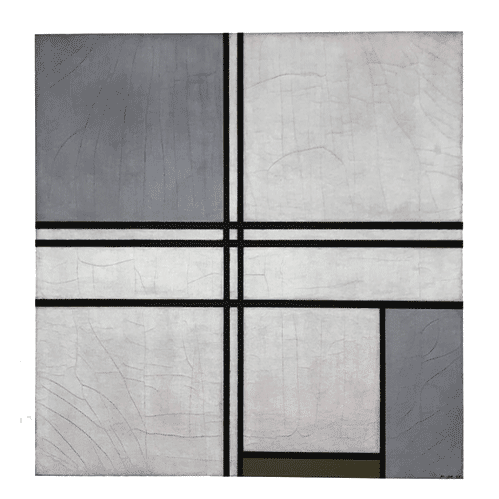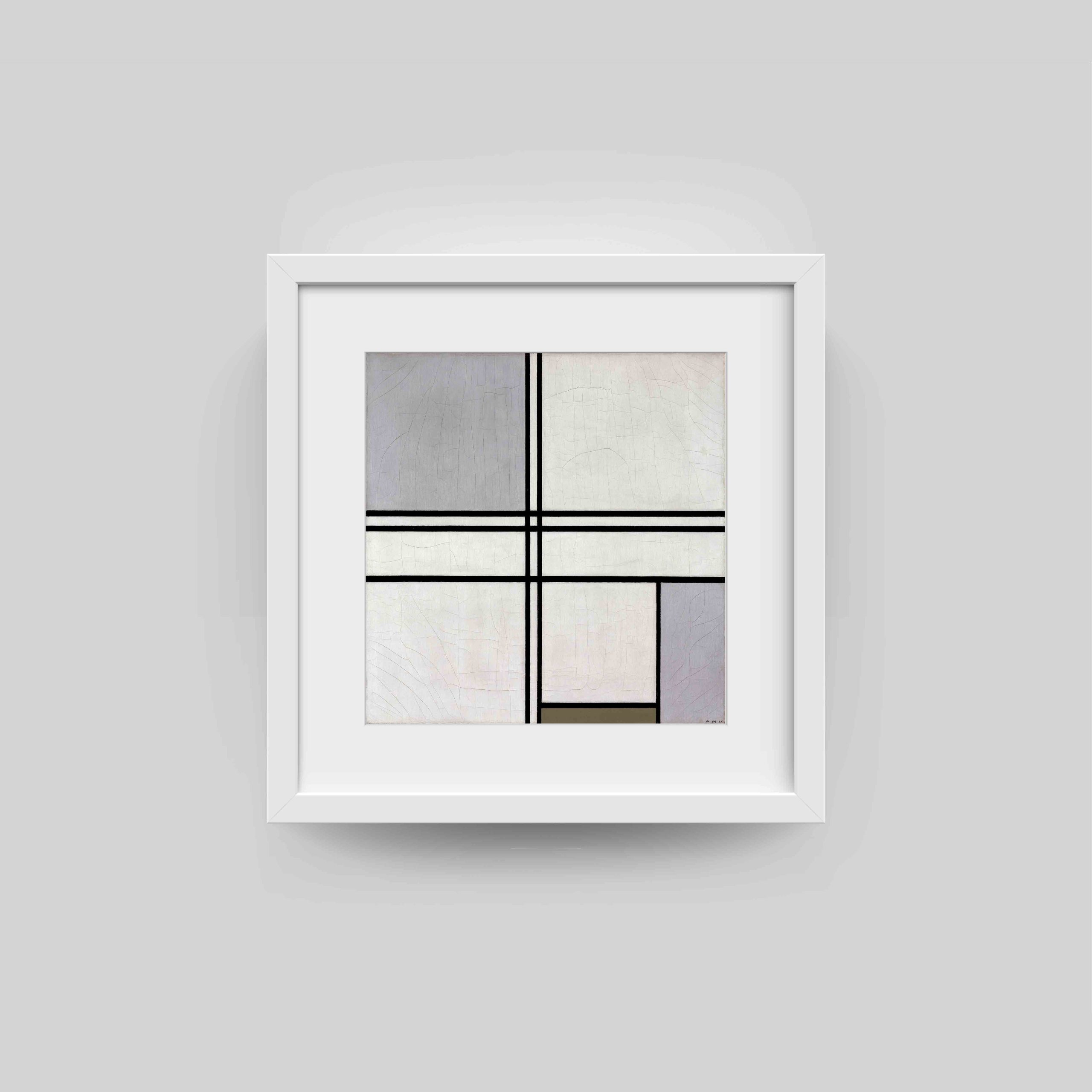
COMPOSITION No. 1 (green)
Cult Art
Fine art Giclée Print
Co-Created and Published by PINEAPPLE GALLERY
Piet Mondrian
1930
Print Dimensions: 43cm x 43cm
He is known for being one of the pioneers of 20th century abstract art, as he changed his artistic direction from figurative painting to an increasingly abstract style, until he reached a point where his artistic vocabulary was reduced to simple geometric elements.
In 1911, Mondrian moved to Paris and changed his name, dropping an ‘a’ from Mondriaan, to emphasize his departure from the Netherlands, and his integration within the Parisian avant-garde. While in Paris, the influence of the Cubist style of Pablo Picasso and Georges Braque appeared almost immediately in Mondrian’s work. Paintings such as The Sea (1912) and his various studies of trees from that year still contain a measure of representation, but, increasingly, they are dominated by geometric shapes and interlocking planes. While Mondrian was eager to absorb the Cubist influence into his work, it seems clear that he saw Cubism as a “port of call” on his artistic journey, rather than as a destination.
“I construct lines and color combinations on a flat surface, in order to express general beauty with the utmost awareness. Nature (or, that which I see) inspires me, puts me, as with any painter, in an emotional state so that an urge comes about to make something, but I want to come as close as possible to the truth and abstract everything from that, until I reach the foundation (still just an external foundation!) of things… I believe it is possible that, through horizontal and vertical lines constructed with awareness, but not with calculation, led by high intuition, and brought to harmony and rhythm, these basic forms of beauty, supplemented if necessary by other direct lines or curves, can become a work of art, as strong as it is true.”
As the years progressed, lines began to take precedence over forms in Mondrian’s paintings. In the 1930s, he began to use thinner lines and double lines more frequently, punctuated with a few small colored forms, if any at all. Double lines particularly excited Mondrian, for he believed they offered his paintings a new dynamism which he was eager to explore. The introduction of the double line in his work was influenced by the work of his friend and contemporary Marlow Moss.
This fine art print is available in small, medium and large. Either framed or unframed and is printed on Canson Archival Paper using 12 colour ultrachrome inks. It can be shipped globally.
$90.00 – $220.00 inc.GST
"COMPOSITION NO. 1"


